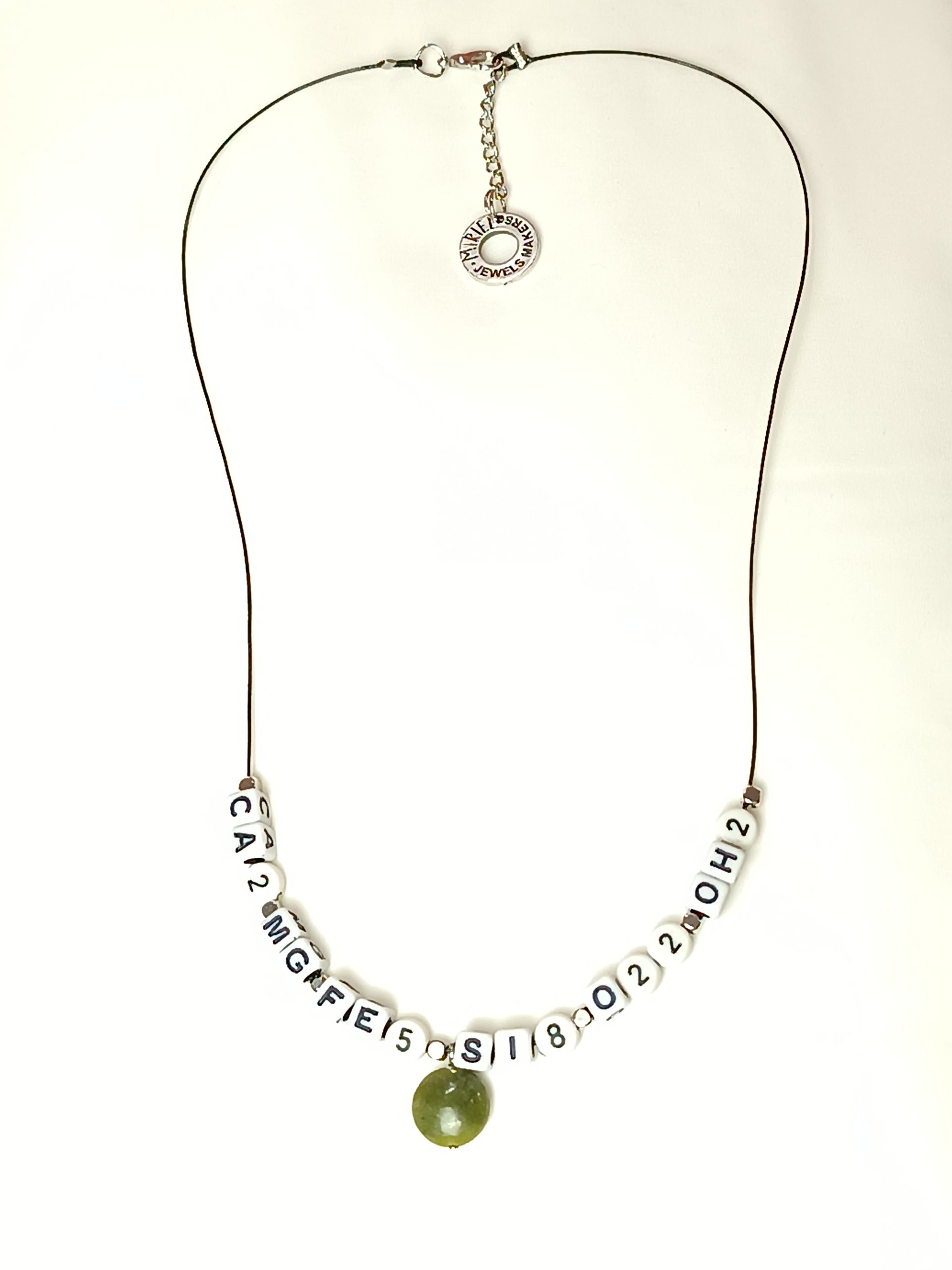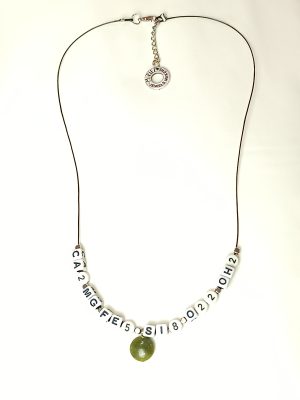Necklace for men and women with letters and a jade gemstone in the middle.
Jade is a variety of the mineral calcium and belongs to the silicate group.
Its chemical formula is:
Ca2(Mg, Fe)5Si8O22OH2
1. Ca (Calcium) 2 atoms
2. Mg (Magnesium) and Fe (Iron) 5 atoms in total
3. Si (Silicon) 8 atoms
4. O (Oxygen) 22 atoms
5. OH (Hydroxyl) 2 groups
Jade is primarily formed through processes related to high pressure and temperature, usually in metamorphosed crystalline rocks, where limestone and siliceous rocks are exposed to high temperatures and pressures.
These conditions generally arise in areas subjected to tectonic pressures.
The most common sources of jade include areas with volcanic and metamorphic rocks, found in countries such as China, New Zealand, and Canada. Jade is used in various applications (Jewelry, Sculpture, Decorative Objects), primarily due to its durability, beauty, and artistic characteristics.
This necklace is unisex,
made from a thin, durable black cord
with letters acrylic beads in black and white,
silver alloy beads,
and moonstones at both ends.
The necklace is 48 cm long, with a 3-cm extension chain.
Packaging
Simple packaging at no charge:
Each piece of jewelry is carefully wrapped in bubble wrap and placed in a sturdy box for complete safety.
Returns
Please be informed that jewelry items cannot be returned.
Unless the product arrives damaged or defective.
In such a case, contact us immediately so we can review your request.
Packaging
Simple packaging at no charge:
Each piece of jewelry is carefully wrapped in bubble wrap and placed in a sturdy box for complete safety.








